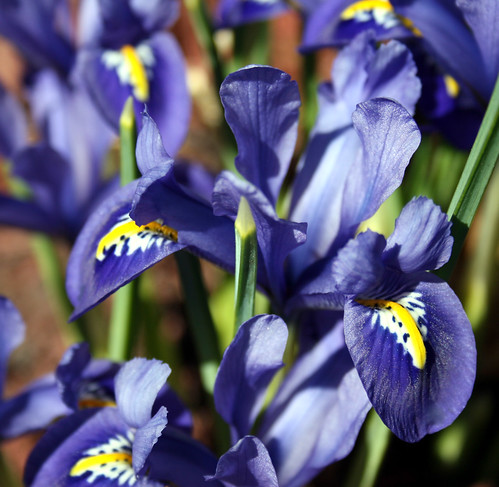Now that Autumn has arrived and the garden is winding down it might be time to think about the health of your lawn.
Here in Toronto there’s a ban on pesticide and insecticide use (not that I used them on my garden or lawn anyway as we are fully organic) so for some, it’s become harder to maintain the quality of their lawn.
The best defense against pests and weeds is a healthy turf, so I thought I’d post some lawn care tips that you can do now and in the spring to ensure that your lawn is healthy.
Autumn Lawn Care
Autumn is the best time to apply grass seed, repair damaged areas and thicken existing turf.
If you have weeds growing on your lawn take some time to carefully dig them out of the ground or if you are so inclined apply an appropriate weed killer to affected areas.
We usually aerate our lawn in the fall and late spring. Aeration will increase the amount of air, water and nutrients getting to the soil, which will strengthen grass roots and help create a healthier lawn. We use a simple two pronged tool that we can push into the earth with our foot, but I believe you can rent an aeration machine at your local hardware store.
A great time to fertilize and reseed the lawn is after aerating.
We also cut the grass at least once during this time of year (mower set to 2 – 3 inches) and give it a watering if it’s been dry.
Spring Lawn Care
If you live in a cool area that gets snow or a lot of moisture in the spring it’s best to stay off the lawn until the ground has dried and it’s firm to walk on.
Begin your spring lawn care by raking up dead grass, leaves and any other debris that might have accumulated throughout the winter season.
If your lawn is uneven or has “frost bumps” this is also a good time of year to roll out the bumps with a light roller.
Aerate the lawn – particularly in high traffic area and then apply a slow release lawn fertilizer. You might purchase a fertilizer with a crab grass preventer if that’s been a problem in previous years.
Spring through fall Mowing guidelines
As spring progresses you should apply grass seed either to the whole lawn or at least to thin areas. Remember a lawn with healthy thick turf will have fewer weeds.
Once the grass begins to grow and it’s time to mow it, remember to set your lawn mower to cut at a height of 2 to 3 inches and in the summer especially when it’s hot and dry outside raise the mower another 1/2 to raise drought resistance. Mowing short weakens the root system and gives weeds a chance to compete with the grass.
Mow in different directions and alter the pattern each time if you can. For example, go north-south, east-west, clockwise, counter-clockwise, diagonally, and so forth. This will cut more leaf surface on weeds that may tend to lean in the direction of mowing and may help the grass compete with them. It also reduces soil compaction and turf wear from the wheels.
Sharpen your mower blades at least once a year. Dull mower blades tear-off rather than cut grass blades. The torn leaves give the lawn a whitish caste and may leave it more vulnerable to disease problems.
It’s fine to leave the clippings on the lawn and if you have a mulching mower that will chop up the clippings further as it will speed up their decomposition. During the summer, clippings decompose and return nitrogen and other nutrients to your lawn. The decomposition is slower in cool weather.
Watering your Lawn
It’s best to water your lawn deeply, but infrequently rather than water regularly, but lightly – as infrequent and deep watering encourage deep roots.
Most lawns require approximately 1 inch of water per week. Use a rain gauge, coffee tin or aluminum pie plate to measure if the correct amount of water is being applied. High spots and south-facing slopes will need more water than other areas. Apply less water in shady areas that receive less than 4 hours of direct sunlight daily. Grass under large trees will need more water since the tree roots will consume water and the tree canopy may intercept rainfall.
Early morning watering is ideal as you’ll lose less water through evaporation. Watering in the evening or at night leaves the grass wetter long and can contribute to the development of diseases or fungus growth.
If you have a hot dry spell during the summer don’t be alarmed if your grass browns. It’s normal for it to go dormant during these kinds of conditions. It will come back nicely once the weather cools again.
Hopefully some of these tips will help you have a healthy lawn next year!


